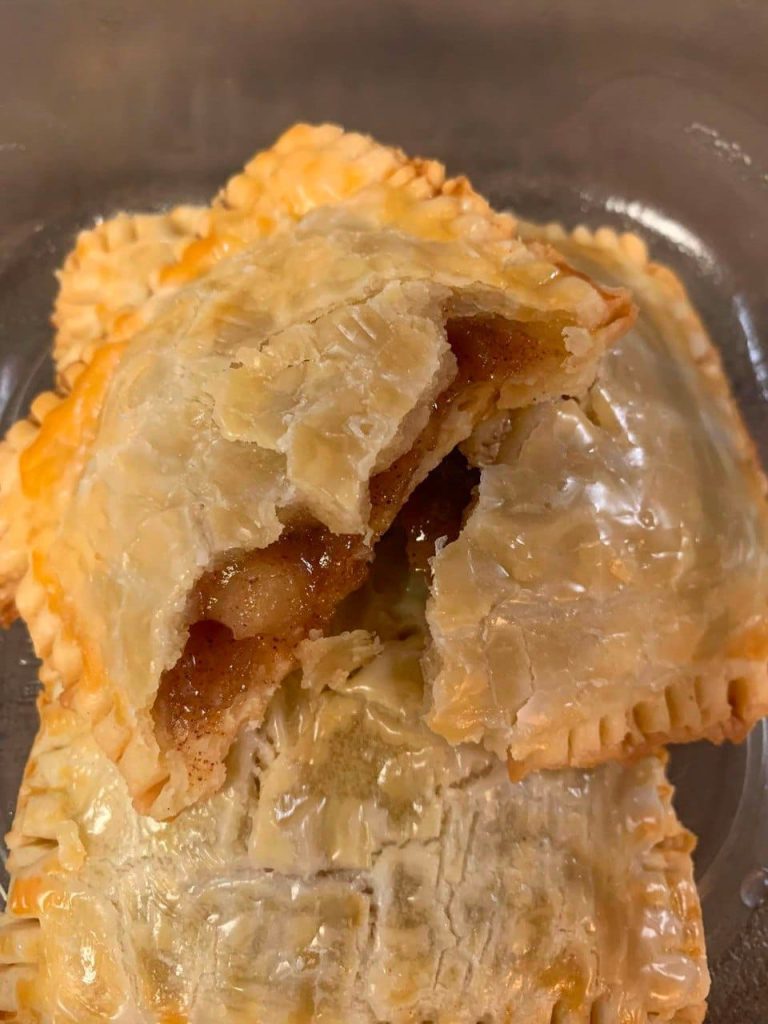Best Greek Orange Pie

A Slice of Sunshine: My Best Greek Orange Pie Memory
There’s something magical about how the zest of fresh oranges can lift your spirits on a cloudy day. Every time I bake my best Greek orange pie—or Portokalopita, as it’s lovingly called in Greece—I’m transported back to a sun-dappled courtyard in Athens, sharing stories (and plenty of laughter) with friends and family. The aroma of citrus and warm phyllo fills the room, instantly making everyone feel at home.
Growing up, I’d watch my grandmother expertly whisk eggs and sugar, her hands moving with muscle memory, before layering crispy phyllo with that irresistible orange custard. Baking this Greek orange pie isn’t just about dessert; it’s about celebrating togetherness, savoring bright flavors, and—of course—indulging in that perfect, powdered-sugar-dusted slice.
Why You’ll Adore This Greek Orange Pie
Let me tell you exactly why this dessert deserves a spot in your kitchen (and your heart):
- Bursting with Fresh Citrus Flavor: The sweet tang of orange juice and zest completely transforms the classic phyllo pie into something bright and unforgettable.
- Light, Crispy Texture: Thanks to layers of phyllo dough, every bite is a delightfully crunchy and custardy experience (like eating a slice of sunshine—no exaggeration).
- So Simple to Make: No need to be a pastry chef! If you can whisk, layer, and pour, you’re already halfway to enjoying this easy Greek dessert.
- Versatile Crowd-Pleaser: Whether you serve it for brunch, afternoon coffee, or after dinner, there’s something universally joyful about this pie. (It always disappears at potlucks.)
Ingredients You’ll Need for the Best Greek Orange Pie
Before you dive in, let’s talk about what goes into making an authentic Greek orange pie (with a few of my personal tips sprinkled in):
- 1 package phyllo dough (Look for it in the freezer section—it’s the secret to those signature flaky layers. Let it thaw overnight in your fridge for best results.)
- 4 large eggs (Fresh eggs add richness and structure to the custard.)
- 1 cup sugar (Totally essential for sweetness, but not overpowering—a beautiful partner for the orange.)
- 1 cup milk (Whole milk gives the custard a creamier texture.)
- 1 cup orange juice (Freshly squeezed is worth it for unbeatable citrus aroma!)
- 1/2 cup vegetable oil (Makes the pie tender and helps brown the phyllo.)
- 1 tablespoon baking powder (For a little lift and lightness.)
- 1 teaspoon vanilla extract (Adds warmth and rounds out the flavor.)
- Zest of 2 oranges (This is where the real orange punch comes from—don’t skip it!)
- Powdered sugar for dusting (The finishing touch, just before serving.)
If you’re a fan of Mediterranean desserts or anything orange-flavored, you’ll want these on hand often.
Step-by-Step Guide: Making the Perfect Greek Orange Pie
Let’s walk through how to make Greek orange pie together, step by simple step!
- Preheat & Prep: First things first, preheat your oven to 350°F (175°C) and grease your favorite medium-sized baking dish (around a 9×13 works perfectly).
- Whisk Eggs & Sugar: In a large bowl, whisk together the eggs and sugar until fluffy and pale—this helps make your custard base extra airy.
- Mix in Goodness: Add in your milk, orange juice, vegetable oil, baking powder, vanilla, and all that fresh orange zest. Whisk until smooth and well combined. (Don’t you love that aroma already?)
- Layer Half the Phyllo: Lay out half of your phyllo sheets in the prepared baking dish. Brush each sheet generously with oil (or melted butter—your choice). No need for perfection here—just keep them somewhat even.
- Pour the Custard: Gently pour your egg and orange mixture over the phyllo, letting it seep into each crevice.
- Top & Finish Phyllo: Add the rest of the phyllo sheets on top, brushing with more oil as you go. This gives you a gorgeous golden crust.
- Bake Until Gold: Slide the dish into the oven and bake for 45-50 minutes, until the top is deeply golden and the custard is set (your kitchen will smell incredible!).
- Cool & Dust: Let your Greek orange pie cool completely before dusting with a snowy layer of powdered sugar. This makes slicing much easier (and prettier).
I always sneak a tiny corner while it’s still warm—it’s impossible to resist.
My Secret Tips and Tricks for Greek Orange Pie Success
Over the years, I’ve picked up a few tricks to make sure every Greek orange pie is irresistibly good:
- Phyllo Handling: Keep your phyllo dough covered with a clean, damp towel as you work, so it doesn’t dry out (trust me, it gets brittle fast).
- Zest First, Juice Second: Always zest your oranges before you juice them—it’s much easier and gets all those fragrant oils right where you want them.
- Bake on the Lower Rack: Placing the baking dish on your oven’s lower rack helps the bottom phyllo get deliciously crispy, avoiding any soggy surprises.
- Chill Before Slicing: If you can wait, let the pie chill in the fridge for a couple hours—it’ll firm up, slice beautifully, and the flavors meld together in the best way.
- Try With Greek Yogurt: Serve your slice with a generous dollop of thick Greek yogurt and an extra sprinkle of zest (the ultimate easy Mediterranean dessert combo).
Creative Variations and Ingredient Swaps
One of my favorite things about this Greek orange pie recipe is how adaptable it is for different tastes (or what you happen to have on hand):
- Citrus Twists: Swap in lemon zest and juice for a Greek lemon pie version, or try blood oranges for a dramatic color and bold flavor.
- Make it Dairy-Free: Use almond or coconut milk in place of dairy milk—still creamy, just a little lighter.
- Honey Drizzle: For an extra-special touch, drizzle with honey right after baking for a glossy, sweet finish that’s totally Greek.
- Nutty Add-Ins: Scatter some chopped walnuts or pistachios between the phyllo layers to add crunch and a touch of richness.
- Low-Sugar Alternative: Reduce the sugar by a quarter cup if you prefer things less sweet—it’s still delicious, trust me!
This pie loves a little experimentation, and so do I—don’t be afraid to make it your own.
How to Serve and Store Your Greek Orange Pie
When your homemade Greek orange pie is ready, here’s how I recommend serving and keeping any leftovers:
- Serve Chilled or Room Temp: It’s fantastic right from the fridge or let it come to room temperature—either way, the orange flavor shines.
- Pretty Slices: Use a sharp knife to cut clean squares (sometimes I even use a serrated knife for those flaky top layers).
- Leftovers: Store the pie in an airtight container in the refrigerator. It keeps well for up to four days—and honestly, the flavors seem to get even better!
Pro tip: Dust with a fresh sprinkle of powdered sugar just before enjoying each slice. (Sometimes the fridge “melts” the sugar, and you always want that pretty finish.)
FAQs: Your Top Questions About Greek Orange Pie Answered
Can I use frozen phyllo dough?
Absolutely! Just thaw overnight in the fridge, then bring it to room temp before unrolling. (Frozen phyllo is a lifesaver for easy Greek desserts.)
What if I don’t have fresh orange juice?
Bottled works in a pinch, but fresh-squeezed oranges bring that vibrant citrus flavor and fragrance that makes this recipe truly special.
Can I make Greek orange pie ahead of time?
Yes—actually, it’s even better the next day! The custard sets up and the orange flavor intensifies. Perfect for prepping ahead for holidays or parties.
Is it possible to make this recipe gluten-free?
Try using gluten-free phyllo dough if you can find it (some specialty stores carry it), and double-check the baking powder label.
What should I serve with Greek orange pie?
A little scoop of vanilla ice cream, some Greek yogurt, or a drizzle of honey are all perfect accompaniments to this easy, homemade pie.
I hope this homemade Greek orange pie fills your kitchen with sunshine and your heart with sweet memories, just as it has for my family. If you try it out, let me know how it goes—I’d love to hear your take, your twists, and your favorite ways to savor every golden, citrusy bite. Happy baking!
Greek Orange Pie
Ingredients
For the Pie
- 1 package phyllo dough Thaw overnight in the fridge for best results.
- 4 large eggs Fresh eggs for richness.
- 1 cup sugar Essential for sweetness.
- 1 cup milk Whole milk for creaminess.
- 1 cup orange juice Freshly squeezed for the best flavor.
- 1/2 cup vegetable oil For tenderness and browning.
- 1 tablespoon baking powder For lift and lightness.
- 1 teaspoon vanilla extract Rounds out the flavor.
- Zest of 2 oranges Adds intense orange flavor.
- Powdered sugar For dusting before serving.
Instructions
Preparation
- Preheat your oven to 350°F (175°C) and grease a medium-sized baking dish.
- In a large bowl, whisk together the eggs and sugar until fluffy and pale.
- Mix in the milk, orange juice, vegetable oil, baking powder, vanilla extract, and orange zest until well combined.
- Lay out half of the phyllo sheets in the prepared baking dish, brushing each layer with oil.
- Gently pour the egg and orange mixture over the phyllo.
- Add the remaining phyllo sheets on top, brushing with more oil.
Baking
- Bake for 45-50 minutes until the top is golden and the custard is set.
- Let cool completely before dusting with powdered sugar.






